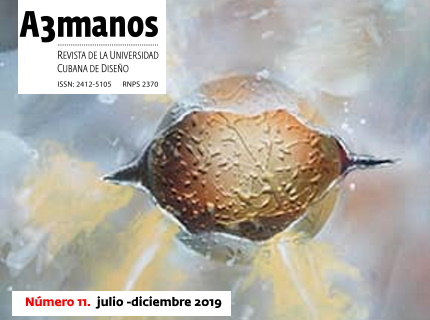A didactics to train designers.
##plugins.themes.bootstrap3.article.main##
Abstract
The objective of the following work is to characterize the creative Didactics and the need for our educators to be creative in their pedagogic activities, activating at the same time the creativity in their students in the hopes of bettering the teaching process in the Superior Institute of Design (ISDi).
The students that enroll at the ISDi to form themselves as designers are prepared students with high academic results; apart from selecting the career as one of their first options because of their abilities and preferences towards it, they also pose a series of qualities of which we can mention: motivation, imagination, independence, spark and sacrifice, amongst others. It seems to be that they aspire to poses a sixth sense, to be creative; which is why to form creative designers it’s essential to count with creative educators that develop creative didactics.
That is why, education at any level, should be conceived as a modeling process of the interactions that should exist between educators and students; with the objective of facilitating the optimal individual development of the potential creativity.
##plugins.themes.bootstrap3.article.details##

This work is licensed under a Creative Commons Attribution-NonCommercial-ShareAlike 4.0 International License.
- Attribution — You must give appropriate credit , provide a link to the license, and indicate if changes were made . You may do so in any reasonable manner, but not in any way that suggests the licensor endorses you or your use.
- NonCommercial — You may not use the material for commercial purposes .
- No additional restrictions — You may not apply legal terms or technological measures that legally restrict others from doing anything the license permits.
- ShareAlike — If you remix, transform, or build upon the material, you must distribute your contribution under the same license as the original. NOTE: This point applies to numbers 1 to 20 of the magazine with the previous CC-BY-NC-SA 4.0 license. Does not apply to the new CC BY-NC 4.0 license from Volume 11, Number. 21 (2024).
References
Alonso, J. (2001) Motivación y estrategias de aprendizaje. Principios para su mejora en alumnos universitarios, en Didáctica Universitaria. Madrid. La Muralla.
Colectivo de Autores (2004) La Personalidad su diagnóstico y su desarrollo. La Habana. Editorial Pueblo y Educación.
Colectivo de Autores (2003) Metodología de la investigación educacional. Desafíos y polémicas actuales. La Habana. Editorial Félix Varela.
D`Angelo, O. (2001) Sociedad y Educación para el desarrollo Humano. La Habana. Centro Félix Varela.
Fernández, M. (2005) La MPM y la Personalidad, Academia de las FAR, CIP.
Fernández, M. (2006) ¿Cómo motivar a los alumnos en la clase?, Serie Temática Educación Militar No13, CIP, Academia de las FAR.
González, D. (2003) La Motivación, varilla mágica de la enseñanza y la educación. Revista Cubana de Educación (110).
López Sú, R. (1997) La Formación de Climas de Aprendizaje Creativos desde una perspectiva motivacional en los CEM de las FAR, Tesis en opción al grado de Doctor en Ciencias Pedagógicas, Academia de las FAR.
Ortega G. y López Sú, R. (1999) Una metodología para el estudio de los climas creativos. La Habana.
Perkins, D. N. (1994) The Mind´sBest W. Harvard University Press.
Suanes, H. (2001) Compendio de artículos, Didáctica CIP, Academia de las FAR.






















